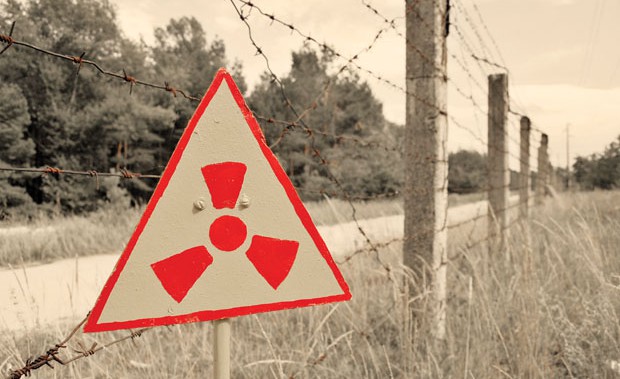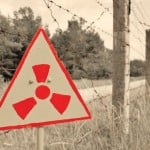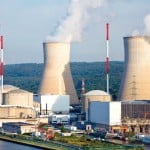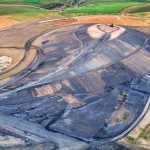![]() The South is the nuclear capital of the world, with more nuclear power plants than anywhere else on the planet. It is also home to one of the country’s largest nuclear waste repositories in Augusta, Ga., and the world’s largest nuclear weapons facility in Oak Ridge, Tenn.
The South is the nuclear capital of the world, with more nuclear power plants than anywhere else on the planet. It is also home to one of the country’s largest nuclear waste repositories in Augusta, Ga., and the world’s largest nuclear weapons facility in Oak Ridge, Tenn.
But has Japan’s nuclear disaster shifted public opinion away from nuclear energy in the South? Virginia’s state legislature will soon find out. Uranium mining has been banned in Virginia for 30 years, but the state legislature is expected to decide whether or not to lift this ban in favor of mining projects that could potentially help stimulate the economy. The first such project is being planned by Virginia Uranium Inc., a private company hoping to mine and mill the Coles Hill uranium deposit in Pittsylvania County, just north of Danville. The deposit holds an estimated 120 million pounds of uranium valued at around $10 billion, making it the largest in the U.S.
“We feel that in the next several months there will be a really strong push to lift the ban,” said Peter Raabe, a conservation director for American Rivers. “The cost of uranium has skyrocketed…That’s why this year it was so important for us to list the Roanoke River.”
The Roanoke River is listed on the country’s Most Endangered Rivers of 2011 because of the proposed uranium mine, which could poison the beloved paddling, fishing, and hiking opportunities in the Roanoke River’s watershed.
“The uranium mining would generate millions of tons of toxic, cancer-causing waste,” says Raabe. “It’s a radioactive legacy that would last for generations.”
The Nuclear Landscape
Even as Germany prepares to shut down all of its nuclear plants (and as Japan, Italy, and Switzerland all scale back their nuclear programs), the Southeastern U.S. is moving forward with plans to build five new nuclear reactors by 2020. These would be the first new nuclear plants in the United States since the 1979 disaster at Three Mile Island in Pennsylvania.
Yet the economic viability of new plants is up for debate. New reactors were already going to be expensive, but heightened regulation stemming from the nuclear crisis in Japan is forcing costs up even more. New plants could require anywhere from $18 billion to $54 billion in federal subsidies – subsidies that renewable energy companies and environmentalists say should be going to the solar and wind industries instead. A study by Duke University last year found that solar power is already cheaper than nuclear power in North Carolina. Now, even GE is projecting that solar could be cheaper than nuclear and fossil fuels in three to five years. Add to that a recent UN report finding that 80 percent of the entire world’s energy could come from renewable sources in 40 years if governments implement more supportive policies, and it’s not surprising that many are beginning to question the Southeast’s commitment to the nuclear industry.
The Southeast is already home to 104 nuclear plants; Charlotte, N.C., has eight nuclear power facilities within 40 miles of downtown. Aiken, S.C. has volunteered to be the country’s nuclear fuel reprocessing site. If Virginia opens its doors to uranium mining in 2012, even more nuclear plants—and nuclear waste—could be headed this way.
Job Creation
Virginia Uranium Inc. estimates that the Coles Hill project in the Roanoke River Basin could create 325 new jobs if uranium mining becomes legal in Virginia. About one-third of employees would work in the mine and the other two-thirds would work in the mill, says project manager Patrick Wales. Mining is the process of removing the ore and waste rock from the underground mine, while milling is the process of extracting the uranium from the ore. “90 percent of those employees come from skill sets we have in Southside, Virginia,” Wales said. “Only about 10 percent could come from existing operations elsewhere.”
That’s not insignificant for Pittsylvania County, whose population is just over 60,000 and whose unemployment rate is just under 9 percent. The salaries for these jobs range from $39,000 to $163,000.
Mining and milling jobs, though, come with occupational risk. Neal Merrifield of the U.S. Mine Safety and Health Administration explains that uranium miners face many of the same risks that other miners do (including exposure to silica, diesel exhaust, and noise), but with the added danger of radiation exposure. “Radon can become inhaled and deposited in the lung where it can irradiate living tissue and pose a lung cancer risk. In some mines, there can be multiple lung cancer risks: diesel particulate matter, radiation, and silica.”
In the southwestern U.S., decades of uranium mining on the Navajo Nation resulted in drastically increased rates of lung cancer and respiratory illness. Merrifield says that safe mining is achievable. “The key,” he emphasizes, “is to identify hazards, assess exposures, and implement effective engineering and administrative controls to reduce exposures.”
Water Worries
Among outdoor enthusiasts, local farmers, and environmental advocates alike, the greatest concern about the Coles Hill project is the mining’s nuclear waste—and the impact of that waste on water resources. Every 1,000 pounds of ore mined yields only about one pound of usable uranium compound. The other 999 pounds make up waste or “tailings” that retain 85 percent of the original radioactivity for hundreds of thousands of years. This is according to data from the city of Virginia Beach, which commissioned a study examining the impact of nuclear waste from Coles Hill on the region’s drinking water supply.











